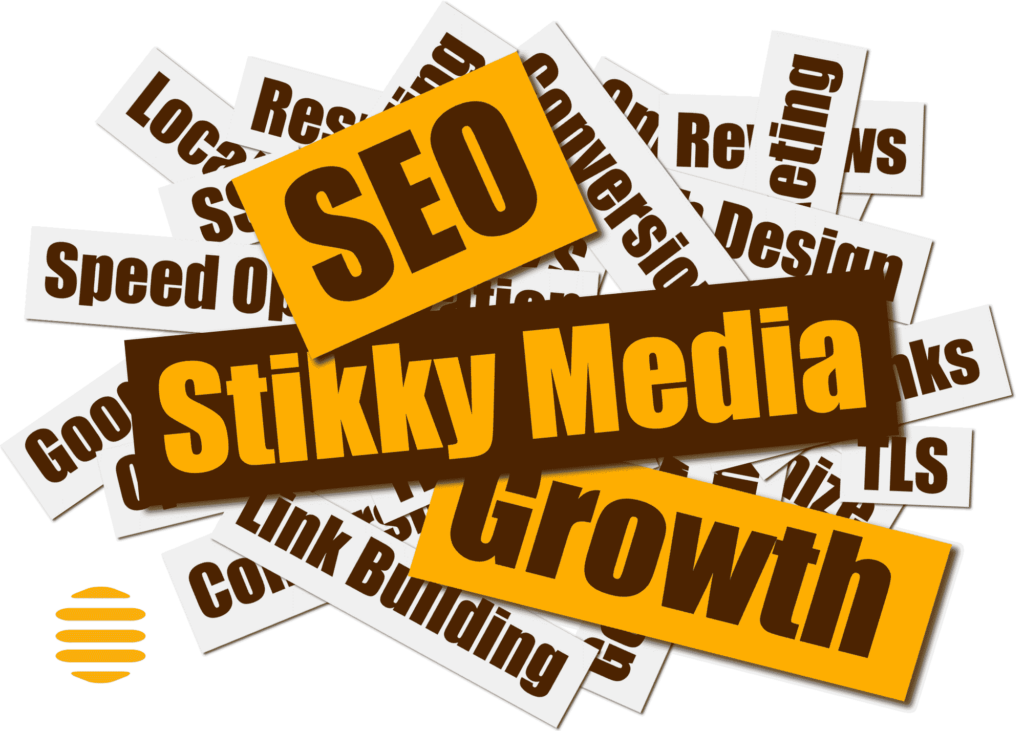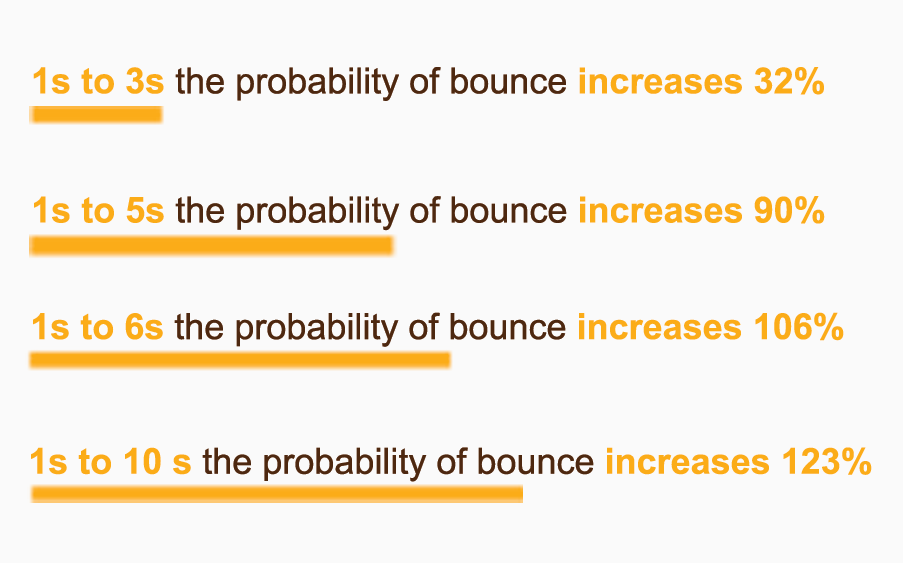
A step by step guide in which we share advanced SEO strategies that worked to produce rapid growth in 2020 and we’re confident will lead to a profitable 2021 for your business.
In this article:
- Introduction
- Basic SEO Strategies
- Implementing HTTPS
- Website Speed Optimization
- Responsive Web Design
- Conversion Rate Optimization
- Local SEO and Google My Business
- Customer Reviews Online
- Content Marketing
- Natural Link Building
- SEO By Stikky Media
Introduction
The advent of the COVID-19 pandemic changed the marketing landscape in some pretty big ways. With mandatory shutdowns of non-essential businesses, many small businesses have struggled to stay afloat. This is especially true for brick and mortar locations. Meanwhile, some ecommerce sites have seen their business grow exponentially, as more and more people are shopping online, since they can’t head to the local market or mall.
As a result, businesses of both types have turned to their websites to generate business. Many brick and mortar locations started selling online, with curbside pickup or delivery. Restaurants and large department stores are two classic examples of this. Ecommerce sites had more competition online and looked for ways to get ahead and stay ahead.
In both scenarios, smart business leaders have turned to Search Engine Optimization (SEO) to get a bigger share of the online market. In this e-Book, we plan to share some of the top advanced SEO strategies that will take us, and you, into a profitable 2021.
“SEO is a marketing function for sure, but it needs to be baked into a product, not slapped on like icing after the cake is baked.”
— Duane Forrester, VP of Industry Insights with Yext
Some SEO basics
Before you can run, you need to learn how to walk. As you know, SEO can help you do well in organic search. If implemented correctly, SEO will help you place higher in the search engine results pages (SERPs). You need to get on that first page for most people to visit your website.
75% of users never scroll past the first page of search results.
But before moving on to any of these advanced SEO strategies, your website needs the basic SEO setup. This can occur during the web design phase, or during a website overhaul for SEO. Basic SEO steps include, but are not limited to, incorporating:
- Domain and URL redirection (if needed)
- SEO-friendly URL optimization
- Redirecting old URLs to forward SEO value
- Properly configuring robots.txt file
- Optimizing XML sitemap files (for web crawlers)
- Optimizing metadata for both search engines and visitors
- HTML heading tag distribution
- Image alt. attribute optimization
- Linking major landing pages internally
- Setting up Google Analytics goals and Google Search Console
- Listing out orphaned pages and link those internally
- Creating a custom 404 page
- Strategic placement of CTA items (buttons, forms, links, etc.)
- Creating and verifying Google My Business and Bing Place pages
- Implementing nofollow/noindex directive to least important pages
- And more
If you’re wondering if SEO is really worth it, take a look at some of these statistics:
53.3% of all website traffic comes from organic search. – BrightEdge
SEO drives 1000%+ more traffic than organic social media. – BrightEdge
Once you have implemented the SEO basics, you’re ready to move on to some of the more advanced strategies. Here’s the list of our proved SEO strategies that will work best for your website in 2021:
- Implementing SSL certification
- Improving page loading time (not just the homepage)
- Designing your website for all devices
- Optimizing on-page conversion rate
- Improving local SEO (& Google My Business)
- Collecting online reviews from customers
- Targeted content marketing strategies
- Investing on natural link building
Keep reading to learn more about each of these more advanced SEO techniques, and how they can help you drive more inbound traffic to your website, convert those traffic to leads, and grow your business rapidly online.
SSL/TLS is a mandatory now
Like any industry or specialization, SEO and web development uses a lot of jargon. Just what is SSL? SSL (Secure Sockets Layer) and its successor, TLS (Transport Layer Security), are security protocols for establishing authenticated and encrypted links between networked computers.
You know more about this than you think you do. The most common and well-known use of SSL/TLS is secure web browsing via the HTTPS protocol. You know a site is secure to use if it has the little padlock in the address bar.
You need your site to be secure to protect your business information, and to give site visitors protection. When you use the HTTPS protocol, you build trust with your users. That little padlock lets users know they can securely transmit confidential information such as credit card numbers, social security numbers, email addresses, and login credentials over the internet, and be sure that your website is authentic.
With an insecure HTTP website, all of this data is sent as plain text and is easily accessible to any eavesdropper or hacker with access to the data stream. In addition, anyone using a non-secure website has no trusted third-party assurance that the website they are visiting is what it claims to be.
This all sounds complicated, but it’s a pretty simple process to use stronger encryption and get a yearly based subscription. However, it is complicated enough that you should probably not try to migrate your HTTP site to an HTTPS site on your own.
Having a blazing fast website is a MUST
Think fast. People accessing your website on a desktop or mobile device expect it to load with lightning speed. Slow website speed is one of the biggest factors for a high bounce rate. This is true when people access a site from any device, it is a huge factor when it comes to mobile. Seconds matter.
In fact according to Think With Google as page load time goes from:

And let’s face it. When was the last time you waited 10 seconds for a site to load? Interested in checking your site’s speed? Take the Google website speed test on a desktop as well as on a mobile device. It can be horrifying to see the results.
Stikky’s secret recipe to increase your website’s speed
The good news is, there are a number of things you can do to increase website speed. From optimizing images to reducing redirects and number of HTTP requests, we do this on a regular basis for every client we have. One of the secret recipe is WordPress site rebuild; which can do wonders for your website speed, which in turn decreases your bounce rate, which in turn keeps people on your site longer.
Responsive web design is the key
Responsive web design is a device-optimized web design methodology that serves all devices with the same code that adjusts for screen size. This means that your web content displays correctly across ALL types of devices, including desktop, tablet, iPad Mini, iPad Pro, all iPhones, Samsung phones, smart TVs, etc. No matter the screen size, users can easily see what you’re offering, and navigate simply without pinching, zooming, or squinting.
Added benefits of responsive web design
Besides making your website display correctly, there are several additional benefits to responsive web design, including:
- Helps Google index one site instead of a desktop site and a mobile site separately
- Google strongly recommends it
- Requires less time to maintain content on one site than two
- Reduces the occurrence of mistakes that can affect mobile websites
- Doesn’t require a site redirect to go from mobile to desktop or vice versa
- With no redirects, site load time is faster
Here are some interesting stats –
52.2% of all website traffic worldwide comes from mobile phones. – Statista
51% of consumers trust mobile-optimized sites more.
As if all of that wasn’t reason enough to optimize your website for mobile, since 2019 Google has adopted a mobile-first indexing policy, which they’ve been phasing in. It was originally set to go into full force in September 2020, but the deadline has been extended to March 2021 If you do have a separate desktop site and mobile site, you will need to make sure the mobile site meets all of Google’s requirements for mobile-first indexing.
Conversion rate optimization: to turn visitors into leads
SEO is great for getting increased traffic on your website. But once you have a prospective customer there, you need to make sure you’re doing all you can to convert them into a sale. That’s where Conversion Rate Optimization (CRO) comes in.
Conversion rate optimization is more than slapping a few Buy Now or Schedule Free Quote buttons on your website. Samples of more advanced CRO techniques are creating targeted landing pages and designing a smart conversion funnel. We can implement the Google Ads (GA) smart setup and goal tracking features to help you increase your conversion rate.
By implementing SEO and CRO together, you’re making a smart decision.
SEO leads have a 14.6% close rate. – HubSpot
Traditional marketing strategies like print ads and direct mail have a 1.7% average conversion rate.
Local SEO and GMB optimization
If you serve customers locally, you should focus on improving your local search presence so more people can find you. For example, if you run a painting company in Victoria, you want to focus on that area. In this scenario, you could benefit from Stikky Media’s local SEO services. Local SEO is especially important for businesses with brick and mortar locations.
Not convinced? Check out these local SEO statistics from Think With Google.
- 30% of all mobile searches are related to location
- 76% of people who search on their smartphones for something nearby visit a business within a day
- 28% of searches for something nearby result in a purchase
- “Where to buy” + “near me” mobile searches have grown by more than 200% from 2017–2019
Our local SEO services include optimizing your Google My Business (GMB) page and helping you get in front of your competitors in both branded and non-branded searches. We can also help you with social media marketing campaigns and Google Ads.
Customer reviews and online interactions
Soliciting customer reviews and interacting with your customers online is of increasing importance. More and more people read reviews before deciding if they want to buy a product or hire a service provider.
93% of customers will read reviews of local businesses to determine if they are any good. – BrightLocal
- For every 1 star increase that a business gets on Yelp, it sees a 5-9% increase in revenue. (Harvard Business Review)
- When a product gets five reviews, the likelihood of it being purchased by others increases by 270%. (Spiege)
- If a business has more than 9 current reviews, they earn 52% more revenue than the average. If a business has more than 25 current reviews, that increases to 108%. (Womply)
“Current reviews” generally means reviews from the last 90 days. Most people don’t pay attention to reviews that are more than a year old. For this reason, it is important to continually solicit reviews.
Google, Facebook, Yelp, and other niche platforms
By claiming your free listings on at least four review sites, you can easily increase revenue. It’s important to solicit reviews from satisfied customers, and then to interact with those reviews by telling them thank you, it was a pleasure working with you, etc. It is also important to engage with reviewers who are less than satisfied.
If the person was an actual customer, reach out to them to try and smooth things over with a repair, replacement, refund, etc. You may want to invite them to contact you privately. Then if they are satisfied, ask them to put an update on their review.
You may also be spammed by people who were never your customers or clients. Unfortunately, there are some bad actors out there who will hire people to give bad reviews. If this is the situation, you need to respond politely, but let others know that this reviewer has your business confused with someone else.
Why go to all this trouble? Because reviews matter. And they come up high in search results. If someone searches for you by name, they will see your Google reviews. And if you are mentioned on Yelp, searchers will see that too.
The importance of reviews
In addition to the importance of reviews in the response of people thinking about purchasing your product or service, reviews play a big part in SEO:
Yelp appears in the top 5 search results for 92% of Google web searches that include a city and business category. – FreshChalk
Reviews account for about 15% of the algorithm Google uses to rank local businesses. – Moz
The importance of responding to reviews
Respond to your reviews, and you will be doing better than your competition. A staggering 75% of businesses don’t even respond to their reviews. But by responding to both positive and negative reviews, you can reap the rewards.
- When a business replies to at least 25% of their online customer reviews, they earn an average of 35% more revenue. (Womply)
- People spend nearly 50% more money at businesses that respond to their customer reviews. (Womply)
- 41% of customers say that when a business replies to their online reviews, it makes them feel the company really cares about their customers. (Bazaarvoice)
- 89% of consumers read business replies to reviews. (BrightLocal)
The majority of customers are willing to leave you a review if you make it easy for them. Send them a direct link to submit a review. Enclose a card asking for a review when you ship a product or have them pick it up. It’s easier than you think!
Utilize the power of content marketing
In addition to the web page content on your website, you need to consistently be thinking about creating new content and develop a content marketing plan. You can do this easily with the help of our content marketing services.
What does content marketing “actually” mean?
Simply put, content marketing is utilizing new forms of content, such as blogs, newsletters, videos, and infographics to engage your audience. The created content can be used to identify you as a subject matter expert, increase brand awareness, drive traffic to your website, and more.
Specific types of content may have different goals. The key is that the content must be valuable, relevant, and informative. Your content marketing plan may include regular blog posts, sending out newsletters, and social media posts.
Why is content marketing important? Check out some statistics.
Content marketing gets 3 times more leads than paid search advertising.
A good content marketing strategy can increase website traffic by 2,000%.
Stikky Media can develop a content marketing plan for you, as well as create all of the content. Content creation will include keyword research to target specific keywords you want to rank for. Services can include blog writing, newsletter setup, lead-magnet placement+management, and more.
By leaving content marketing to us, you have more time to focus on running your business. No blogs get posted and no newsletter goes out without your approval, so you are still in control.
And it doesn’t even have to be all-new content. Updating old blog posts with new content can boost traffic by more than 100%.
Put constant efforts on natural link building
Some SEO companies give the rest of us in the industry a bad name by buying links. This is expressly against Google guidelines because links affect search results. They want your website to appear high in the SERPs because you deserve it — not because you have deep pockets. Google also discourages simply trading links, and may penalize you for buying or trading links.
This is why Stikky Media engages in natural link building for your website. We do this in a number of ways, but one of the biggest is by creating pillar content and getting links from niche/relevant websites In this way, our content marketing and link building services are intertwined.
Building links naturally would also include making sure your website is listed in all of the various directories, like Google My Business, Facebook, Yellow Pages, Better Business Bureau, Yelp, etc. We will also work to get you backlinks from industry groups to which you belong.
In general, the more backlinks a page has, the more organic traffic it gets from Google. – Ahrefs
73.6% of domains have reciprocal links, meaning that some of the sites they link to also link to them. – Ahrefs
Rev up your SEO with Stikky Media
Stikky Media is a digital marketing agency based in Victoria, Canada. Our SEO, PPC, CRO, content marketing, and social media marketing strategies give our clients worldwide the tools necessary to dominate their competition. Whether you are a Venture Capitalist launching a project and looking to maximize on Google search results, an established enterprise corporation looking for a comprehensive digital marketing campaign, or a startup looking for affordable online marketing services, Stikky Media has you covered. Contact Stikky Media today for a free website audit: [email protected] and start your next chapter of online success with us.



